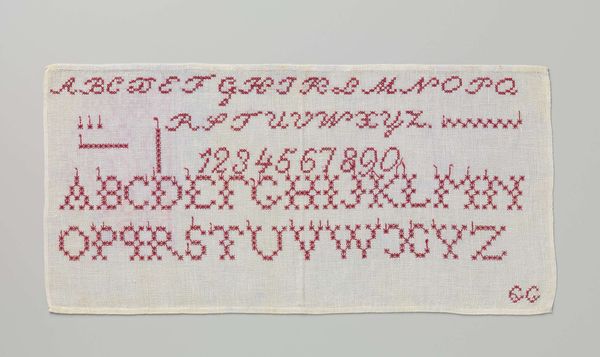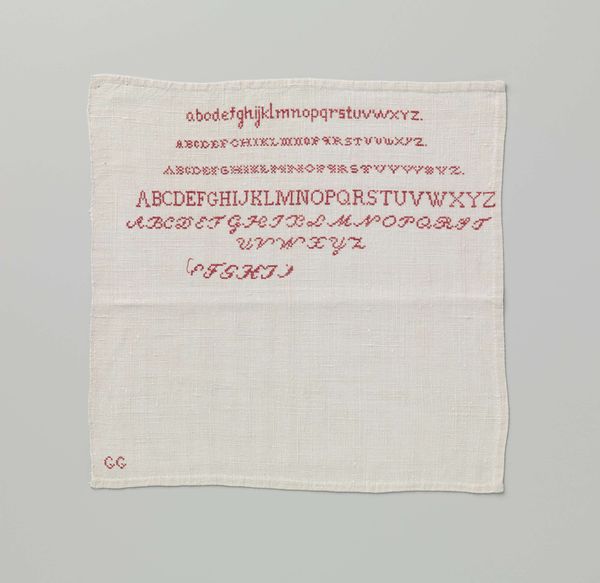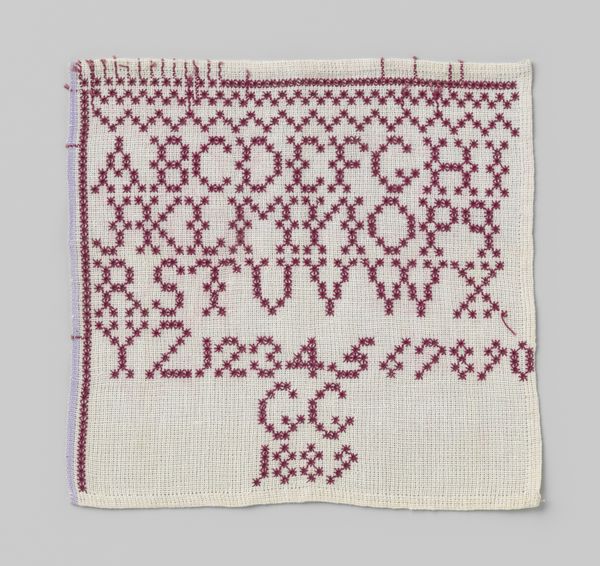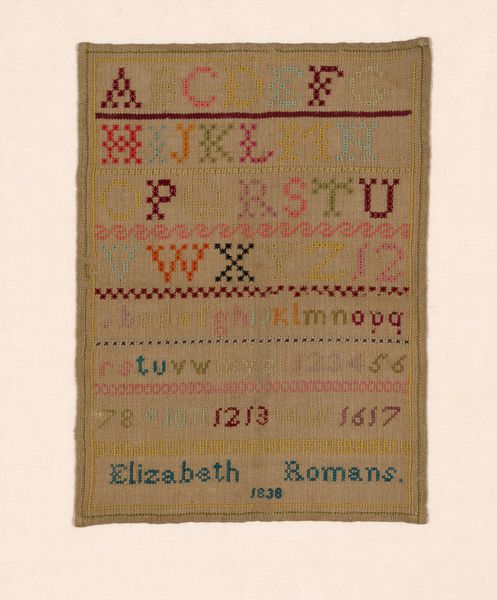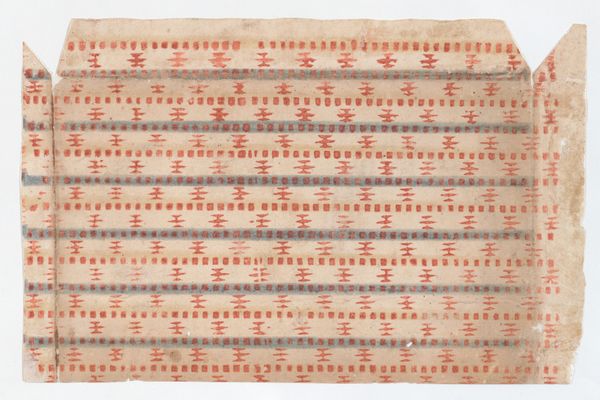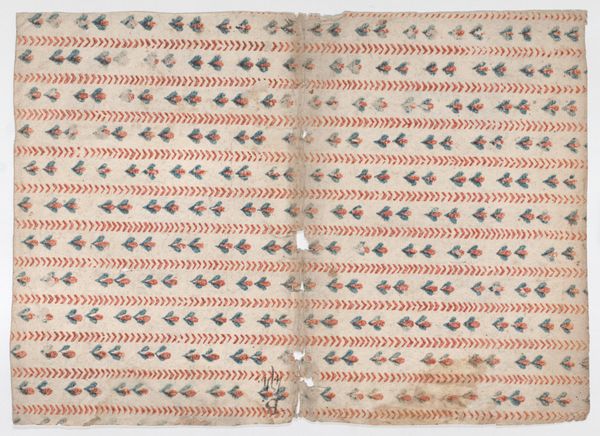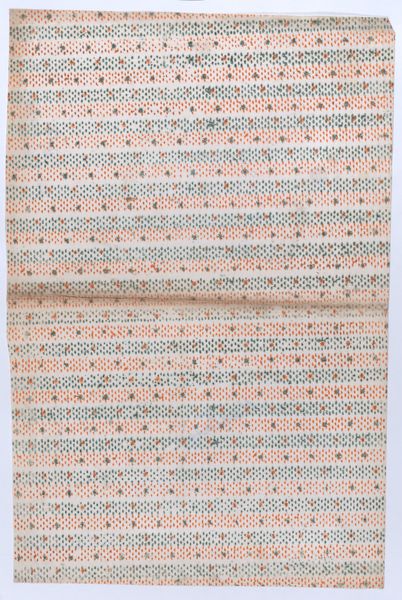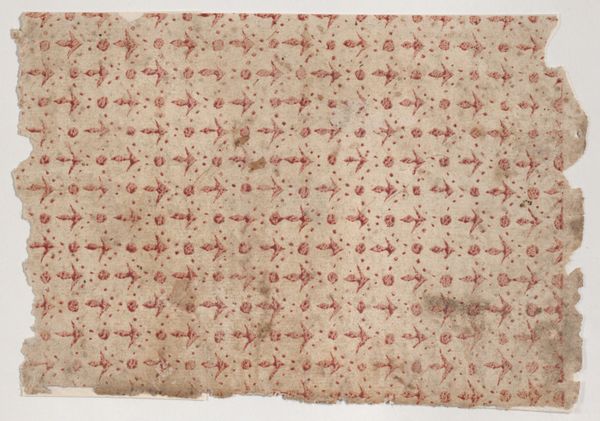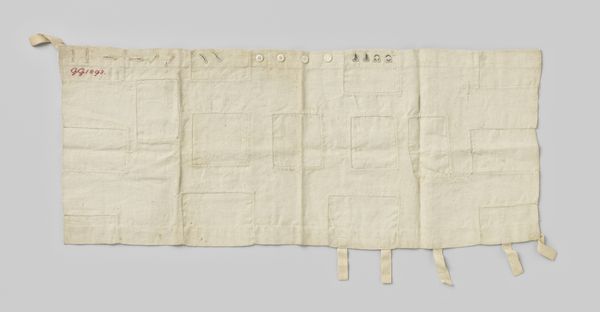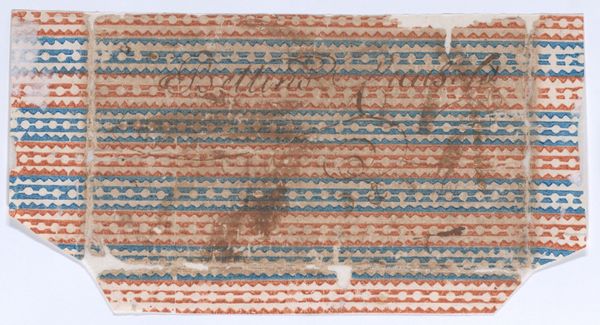
Merklap van linnen met een stramien van rode letters en cijfers, gemerkt: 'G. Glas april 1894 mei" c. 1894
0:00
0:00
drawing, mixed-media, fibre-art, collage, weaving, textile
#
drawing
#
type repetition
#
mixed-media
#
fibre-art
#
collage
#
weaving
#
hand drawn type
#
textile
#
fading type
#
bright colouring
#
soft and bright colour
#
watercolour bleed
#
white font
#
delicate typography
#
imprinted textile
#
small lettering
Copyright: Rijks Museum: Open Domain
Curator: Before us we have a 'Sampler of Linen with a pattern of red letters and numbers, marked: 'G. Glas april 1894 mei,' crafted circa 1894. What are your initial impressions? Editor: There's a delicate precision, yet it also feels constrained, almost oppressive in its order. It makes me think of the limitations placed on women’s lives and their roles as domestic keepers and educators of young children at that time. Curator: I am captivated by its formal properties. The grid of red stitches against the linen is really compelling; it presents a carefully controlled study in the interplay of line, texture, and repeated forms. There's an almost mathematical beauty in the progression from alphabets to numerals and finally to a name. Editor: Absolutely. But don't you find the act of meticulously stitching these characters into fabric rather laden with socio-political implications? Samplers were historically used not only to display skill but to teach young girls literacy, a form of quiet empowerment within a restricted sphere. Curator: You're drawing my attention to the intended purpose of the materials and medium; however, note how the materiality transforms the language act into something meditative. I wonder if we are witnessing here an act of rebellion in the repetition of thread across the fibers, not so much social inscription, but one that pushes it toward self-reflection? Editor: Perhaps both, really. While I find myself gravitating towards viewing this practice of ‘making do’ by transforming meager tools into one’s only possible language –-a means for women's slow enfranchisement– I realize there’s potential to reflect on the textile arts through both its functional capacity and its aesthetic, artistic components. Curator: I am in agreement, how does the domestic intersect with the radical, where the rigid discipline intersects with both practical instruction and unexpected experimentation? I must admit I hadn’t thought of it that way before! Editor: And now, seeing how we converge on a perspective, let's remember that every artifact offers multiple meanings across time and place. Each analysis builds upon the other in subtle ways.
Comments
No comments
Be the first to comment and join the conversation on the ultimate creative platform.
